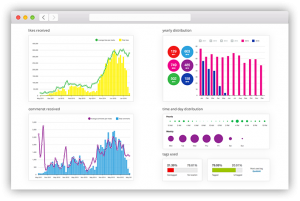AI Predicts Next Words, Next Actions – Is It Worth Trillions?

Google reportedly paid $2.7 billion to bring back an AI genius as it and competitors continue to build out services that rely heavily on artificial intelligence.
Noam Shazeer, co-author of a seminal research paper that started the AI boom, resigned from Google in 2021 to start Character.AI. When that company began to falter, Google stepped in to make him an offer, according to one report.
Google wrote Character a check to license its technology, but something unusual happened. Shazeer agreed to once again work for Google.
The Wall Street Journal poses the question: are companies paying too much for AI?
Perhaps, but when you speak with the rest of the industry, executives say their business depends on it now — spanning everything from advertising to distribution. It’s not just about investments in the technology, but investments in data centers, some type of electricity, and more.
The paper Shazeer published with seven other Google researchers in 2017 called “Attention is All You Need,” detailed a computer system that could reliably predict the next word in a sequence when prompted by humans. Ironically, it later became the platform of the generative AI technology at Google.
Shazeer and Daniel de Freitas were part of the team that developed a chatbot named Meena back in 2020. A Reddit post by a fellow employee describes how their invention of the Transformer is what put the magic into AI, making chatbots sound human.
There has been a massive appetite for AI in all types of businesses.
The technology continues to mature — not just for Google, but for the entire business world. It started a trend that keeps growing.
eBay executives call AI “magic.” EBay’s most recent service, Magic Bulk Listing Tool, helps sellers save time and effort as they create listings for their products. This AI-powered tool allows sellers on eBay to upload batches of product images, and the technology generates draft listings with suggested categories, titles, and item specifics in seconds.
Sellers review the details for accuracy and publish the listings to the marketplace. The tool can process hundreds of photos per batch and create numerous drafts simultaneously.
One of the traits of AI is the ability to remain consistent, yet replicate the brand’s voice. Social-network algorithms won’t rank posts high if it detects duplications or inauthenticity, so Yext has begun testing an AI large language model (LLM) that uses a “brand’s voice” to rewrite posts for specific regions or locations.
“I tested this for a pet insurance and it rewrote the post to talk about how to take your dog for a walk in Central Park in New York, or rewrote the post in French for Montreal,” said Chris Brownlee, vice president of product management at Yext. “It would slightly tweak the vernacular and use the brand’s voice.”
Yext — which which got its start supporting companies by keeping online information and listing at multiple locations updated through its knowledge graph — recently released a social-media management tool powered by AI to help brands with multiple locations manage their posts. Brownlee said this new tool provides advice on how to personalize it based on the network.
The company’s latest social update tool works similar to its listing tool, with the first version of the tool helping to create or rewrite the post. Analytics monitors the performance, engagement and impressions of the posts. It is a stand-alone offering, Brownlee said.
“We’ve added AI creations and social media support,” he said. “It’s a unified inbox to manage the responses back from customers and add filters and assign them to have others collaborate on them,” he said.
He said Yext’s recent tech-related acquisition of Hearsay supports compliance issues that may arise in posts. The company completed the acquisition in August.
Measuring content performance provides a different type of metrics. Adobe recently announced Content Analytics in beta. The tool can identify colors, objects and styles that resonate most with a specific audience. The company says that just knowing millennials engage mostly with blue, for instance, can inform the types of content they generate next.
Journey Optimizer, an AI assistant, can generate multiple variations of on-brand marketing assets for channels like email and SMS, to drive real-time experiments. Personalized web experiences are built with Adobe Experience Manager to test multiple versions of AI-generated content simultaneously.
None of the features are part of existing applications. For new customers, the setup depends on the size and needs of the organization, which vary.
The offerings sit within Adobe Experience Cloud, which offers a variety of third-party integrations where it makes sense. Adobe Customer Journey Analytics for instance, which includes Content Analytics, provides a complete view of customer engagement. It can integrate with a variety of sources from Hootsuite to Invoca.
When asked what type of AI is being used, an Adobe spokesperson cited Adobe Firefly, Adobe’s family of creative generative AI models designed for commercial use. It’s part of the Journey Optimizer update for image generation.
The AI Assistant — which is also part of this — includes Large Language Models and Adobe base models for product documentation.
(5)
Report Post








